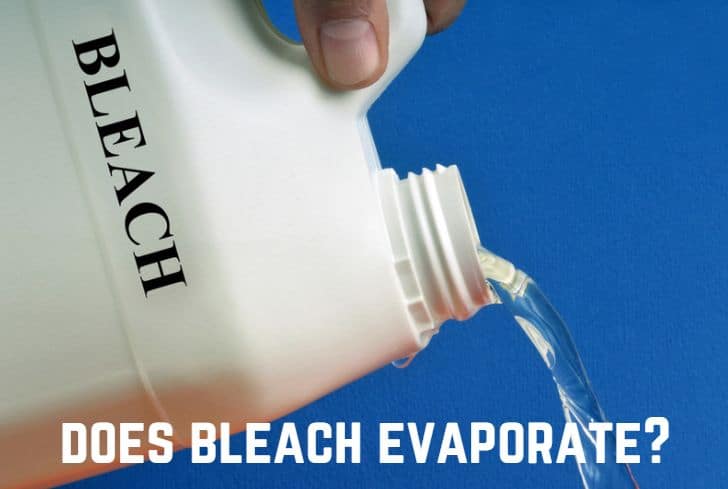Does Plastic Conduct Electricity? (No. Read Why?)

Have you ever plugged something with a plastic coating into a wall outlet and questioned why you never felt any electric current? You may have also wondered why so many of your electrical devices seem to be coated with plastic. Is there a relationship between electricity and plastics? Or does plastic conduct electricity?
That is a crucial question because many things you use in your home are powered by electricity. This article will explain if plastic is an electrical conductor or insulator. You also learn the difference between an insulator and a conductor. We tell you if plastic conducts electricity or prevents humans from electric shocks. Finally, we give good examples of good and bad electrical conductors.
Is Plastic a Conductor of Electricity?
Plastic is not a conductor of electricity. Free electrons must travel around in material for an electric current to flow through it. Electrons and ions are absent from plastics. Most plastics contain organic polymers. Organic polymers are formed by carbon atoms, or carbon atoms, in addition to nitrogen, sulfur, and oxygen.
Since plastic is organic, electrical conduction cannot occur since it lacks an ionic element. The joining of many monomers forms the basis for the development of polymers. No room is left for an electric current to pass due to how the monomers connect.
Conductor vs Insulator: What’s The Difference?
The capacity of a material to allow the flow of electric current is the main difference between a conductor and an insulator. A material that allows electric current to flow through is called a conductor. A substance that does not readily conduct an electric current is known as an insulator.
You can see the crucial differences between conductors and insulators in the table below:
| Conductors | Insulators | |
| 1 | Electric charge can move more freely. | The electric charge does not move easily. |
| 2 | Electric field exists on the surface and inside the material. | Electric fields do not exist on the surface and inside the material. |
| 3 | Conductors store energy. | Insulators don’t store energy. |
| 4 | Their resistivity can vary from low to high. | They have a high resistivity. |
| 5 | Conductors show high conductivity and low resistance. | They show minimal conductivity and very high resistance. |
| 6 | Their covalent bonds are weak. | Their covalent bonds are strong. |
| 7 | The valence band is almost empty, and the conduction band is full of electrons. | The conduction band is almost empty, and the valence band is full of electrons. |
Is Plastic a Conductor or Insulator?
Plastics are insulators. They prevent free electron passage, which in turn prevents the flow of electric current. Plastics have atoms that are closely bonded to one another. It then becomes hard, if not impossible, for electrons to flow from one atom to the other. An insulator is anything that prevents the flow of electric current.
Since plastic has a low conductivity, minimal current can flow through it. The atoms in plastic have a powerful covalent bond. The exchange of one or more pairs of electrons between two atoms forms a covalent connection. The pairs are referred to as sharing or bonding pairs. Covalent bonding is the sharing of electrons.

Why Does Plastic Not Conduct Electricity?
Several factors make plastics not conduct electricity. Let us look at a few of these factors:
- High resistivity level
A material’s resistance to an electrical current flowing through it is measured by its resistivity. Ohm-meters (Ωm) is used to measure electrical resistance. Electrical resistivity in insulators is high, with values in the range of.
Here are the resistivity levels of several plastics:
- ASA/PC flame retardant – 14 1015 Ohm.cm
- ABS/PC blend 20% glass fiber- 16 1015 Ohm.cm
- CA Cellulose Acetate- 12 1015 Ohm.cm
- ABS high heat- 16 1015 Ohm.cm1
The plastics molecules are linked together so that the atoms’ electrons are completely occupied. As a result, plastics lack free electrons that can move around and conduct an electric current.
- Low Thermal Conductivity
Thermal conductivity is typically low for all insulators. It means that insulators make it difficult for heat to travel through them. Electric current cannot easily travel through plastic because the electrons there are static and not roaming. Plastics concentrate the flow and guard against current loss.
- Breakdown voltage:
Because of breakdown voltage or dielectric-strength, plastics do not conduct electricity. If exposed to excessively high voltages, all insulators will conduct electricity. Materials like plastics lose their insulating properties at high voltages. The breakdown voltage is the voltage at which this transformation takes place. Different levels of breakdown voltages exist for insulators.
It is for this reason that plastics won’t be used in industries. They will instead be mostly used as insulators in homes with low voltage.
Does Plastic Conduct Heat?
Due to the lack of free electrons available for thermal conduction, plastics are poor heat/electrical conductors. Heat is transferred through thermal conduction when one portion of a material body comes into touch with another. Plastics don’t have any free electrons in contrast to their metal counterparts. The plastic molecules are tightly compressed, increasing their density.
When there is a high density, there is no room for atoms to move about and cause vibrations, producing heat. Density measures the mass per unit volume. Temperature and moisture will also have an impact on the thermal conductivity of plastics.
Can Plastic Prevent Electric Shock?
Yes, plastic being a bad insulator can prevent electric shock. Electricity has a dangerous energy level that can shock and kill. Most electrical cables are coated with plastic or rubber to prevent electrical shock. When electrical wires are covered in plastic, you can be sure that the electrons moving through them won’t pass through your body when you contact them.
Plastics are primarily suitable for electrical wire insulation due to their flexibility and ease of bending around curves. They also burn slowly and effectively release heat.
When someone comes into contact with a voltage difference, they can get an electric shock. Consider a situation where a person stands on ground that has zero voltage. If they come into contact with a conductor in a faulty electrical circuit, the electric current will flow through.
But it’s crucial to remember that electric current, not voltage, is what shocks you. Your body can experience a shock with just 1 mA (1/1000th of an Amp) of electrical electricity. More of this at this rate will cause your muscles to contract uncontrollably. You will be unable to release the electrical conductor in this situation. Above 100 mA, death occurs.
The plastic covering on a wire prevents the transfer of electrical current when you touch it. Standing in a plastic bucket will shield you from any potential shock by preventing the connection to the ground. Don’t hold onto someone who is being electrocuted, though, if you see them. They’ll probably pass the electrical current to you.
Examples of Good and Bad Conductors of Electricity
Our lives depend heavily on electricity, which can be very deadly if not handled properly. It is essential to know which materials are good conductors of electricity and which are not.
Good Conductors of Electricity
Materials that permit electricity to flow readily are considered good conductors of electricity. These materials provide low flow resistance. Highlighted below are four good conductors of electricity.
- Ionic conductors: Ionic conductors, like salt water, are conductors in solution form.
- Metals: The majority of metals are good conductors because they have a large number of free electrons and free mobility. The metals include copper, silver, aluminum, and gold, to name a few. The conductivity of a metal increases with the number of free electrons present.
- Semi-conductors: Semi-conductors still have their uses even though they are not very good at conducting electricity. Semi-conductors include materials like germanium (Ge) and silicon (Si).
- Non-Metals: Certain non-metals function well as electrical conductors. We have carbon in the form of Graphite. Only three of the four carbon atoms in the graphite structure are used for bonding, leaving one atom free.
Bad Conductors of Electricity
Materials that act as insulators prevent electricity from passing through. Strong insulators are usually used to coat or provide a barrier between conductors to keep electric currents under control. Highlighted are materials that are poor conductors of electricity.
- Pure water: There are no charged ions or electrons in pure water. The said ions or electrons must be free to move. While pure water molecules may be free-flowing, they are not charged.
- Plastic: We have already seen that plastics don’t have charged ions or electrons but are organic polymers. Polymers consist of a long chain of monomers that are rigid.
- Glass: Due to its strong chemical bonding, glass does not conduct electricity in its normal state. Because of this, x-ray tubes and light bulbs are made from them.
- Rubber: The long, chain-like polymer structure of rubber restricts the free movement of electrons. The valence shell’s strong electron bonds restrict the flow of electric current.
- Oil: Electric current cannot be conducted by charge carriers found in the oil. Long hydrocarbon chains in the oil prevent ionic molecules from dissolving in it. There are no ions present because there is no ionization.
Conclusion
Because of their organic polymers, plastics are poor electrical conductors. Free electrons or charged ions are required for an electric current to flow through a medium. You can see why plastics are insulators by the differences between conductors and insulators that we have highlighted. Plastics are poor heat conductors due to the same properties.






